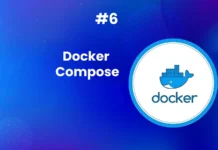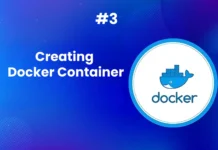When working with Docker, one of the challenges new users face is handling persistent data. Containers are designed to be ephemeral, meaning they are temporary by nature. However, many applications generate data that must be retained, such as database records, logs, or configuration files. Docker provides data volumes and bind mounts to solve this problem and allow data to persist across container lifecycles.
This is the fifth article in our Docker series. I hope you’ve been following along! If you missed any of the previous articles, you can catch up by visiting the links below:
- A Beginner’s Guide to Docker: Introduction and Setup for Newbies
- Understanding Docker Networking: Virtual Networks, Ports, and Firewalls Explained]
- Creating and Using Docker Containers: A Step-by-Step Guide
- Mastering Dockerfile: Build, Cache, and Optimize Docker Images
Be sure to check them out if you haven’t already, and let’s dive into managing Docker volumes in this article!
In this article, we’ll explain what persistent data is, why it’s important, and how Docker’s data volumes and bind mounts can help you manage this data effectively.
Step 1: Understanding Container Ephemerality
By default, Docker containers are ephemeral—they are designed to be temporary. If you stop or remove a container, the application running inside it is destroyed along with any data stored in the container. This is a good practice for immutability, ensuring that changes to the environment are always managed by updating or redeploying the container.
But what happens when your application produces unique data? For instance, if you’re running a MySQL container, the database files must persist even if you replace or update the container.
Step 2: Introducing Data Volumes
Docker data volumes provide a way to store persistent data. When you create a volume, Docker stores your data in a location outside of the container’s filesystem, ensuring it remains available even if the container is removed.
How to Create a Volume:
You can specify a volume in your Docker run command:
docker run -d --name mysql -v mysql_data:/var/lib/mysql mysqlHere’s what this command does:
-v mysql_data:/var/lib/mysql: Creates a volume namedmysql_dataand maps it to/var/lib/mysqlinside the container.- The data in
/var/lib/mysqlwill now persist even if you delete the container.
Inspecting Volumes:
After creating a volume, you can list and inspect them using the following commands:
docker volume ls
docker volume inspect mysql_data
Docker will show you where the data is stored on your host machine, ensuring that the data is safe across container restarts.
Step 3: Named Volumes for Easier Management
You can make managing volumes simpler by using named volumes. Instead of letting Docker assign random names, you can assign a human-readable name to your volumes:
docker run -d --name mysql -v project_db:/var/lib/mysql mysqlNow, instead of seeing random volume names, your data is stored in a clearly named volume (project_db), making it easier to manage and reuse across multiple containers.
Step 4: Understanding Bind Mounts
Bind mounts allow you to link a directory or file from your host machine to a container. This is particularly useful for development, where you want to edit files on your host machine and see the changes reflected instantly inside the container.
Creating a Bind Mount:
docker run -d --name my_app -v /path/on/host:/path/in/container my_app_imageThis command maps a directory from your host (/path/on/host) to a path inside the container (/path/in/container). Unlike volumes, bind mounts link to specific host files or directories, giving you direct access to the files within your container.
Step 5: Persistent Data in Databases
To demonstrate persistent data, let’s use a MySQL container. By default, MySQL stores its data in /var/lib/mysql. Without a volume or bind mount, deleting the container would delete all your data. Using a volume like this ensures your data is safe:
docker run -d --name mysql -e MYSQL_ROOT_PASSWORD=my-secret-pw -v mysql_data:/var/lib/mysql mysqlIf you remove the container and start a new one, the database will still contain your previous data because it’s stored in the mysql_data volume.
Step 6: Cleaning Up Volumes
Volumes can accumulate over time, especially if you’re testing multiple containers. Docker does not automatically delete volumes when you remove a container. You can delete unused volumes manually using:
docker volume rm <volume_name>Or remove all unused volumes with:
docker volume pruneThis is useful for keeping your system clean after experimenting with containers.
Conclusion
Understanding how to manage persistent data in Docker is crucial for building reliable, production-ready systems. Docker volumes and bind mounts provide flexible ways to ensure that data generated by your containers is preserved, even as containers are replaced or updated. By using the steps outlined here, you’ll have a solid foundation for managing data in Docker efficiently.





[…] A Guide to Persistent Data in Docker: Data Volumes and Bind Mounts […]